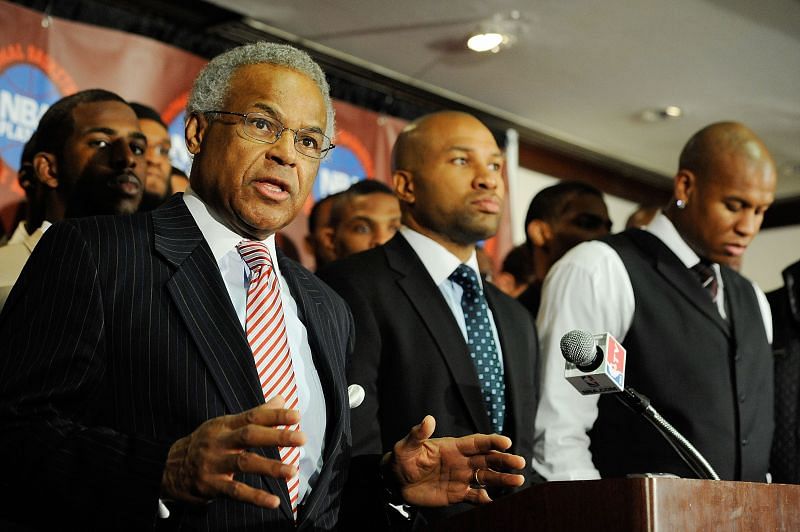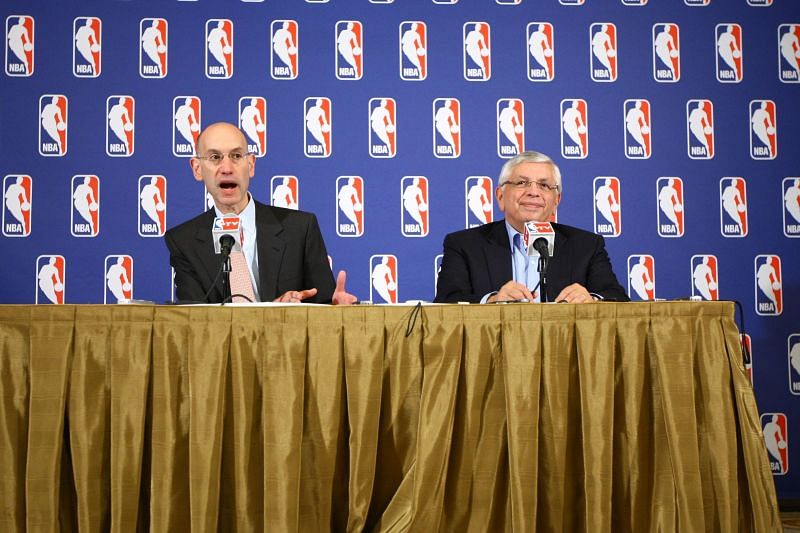
NBA lockouts: Why did they happen, what came out of it, and more

NBA lockouts are a rare occasion, though have happened on four occasions in the past thirty years. As in any sport, NBA players, organizations and owners come into dispute continuously, whether publicly or behind closed doors. Player power continues to grow in the league and with the hold that many stars have over their franchise and in the public sphere, it is no surprise that issues often boil over.
The most recent example of this came this season when long-time Houston Rockets star James Harden was finally able to force a trade away after years of struggling to reach the Finals. However, NBA lockouts are a far rarer occurrence. Nevertheless, they have halted proceedings in the past, which we will look into in this article.
NBA lockouts: How league proceedings were halted in years gone by

The first NBA lockout didn't occur until 1995. In fact, there was a time when the NBA was the only major sports league in America not to have been interrupted by labor disputes. When the league's collective bargaining agreement expired and no new agreement could be resolved, commissioner David Stern was forced to stop all proceedings and lock out the players.
As with the other NBA lockouts that we will discuss, the primary source of debate surrounds players' salaries, their contracts and free agency rules. All league business was terminated, except for the draft, and teams were unable to sign players or compete in summer competitions. Once a new agreement was resolved between the league and the players' union, proceedings resumed and no contests were lost with the season beginning on the 12th of September.
Just a year later, the NBA experienced another lockout, yet this one was far shorter in length and less impactful. This time, the league and players union butted heads over the share of the $50m in profit made from television revenue. Initially, the league wanted to split profits 50/50 but the players pushed for more and ended up receiving an additional $14m in salary cap space for their teams that was applied during the last four years of the six year collective bargaining agreement.
The third NBA lockout came in 1998 and lasted the longest from July 1st to January 20th, 1999. It even shortened the league season to 50 games with the All-Star game, set to feature a dunk contest between Kobe Bryant and Vince Carter, to be canceled.
The lockout commenced when owners reopened the collective bargaining agreement in March 1998, seeking to set a cap on players' salaries. Inevitably, the players' union opposed such a move. However, after division within the union, an agreement was eventually reached in January 1999 that set a maximum limit on salaries and a pay-scale for first-year players.
In the years following the NBA lockout in 1998, more and more players signed maximum contracts under the salary cap, while younger stars were urged to sign shorter deals to give them the most flexibility. When the agreement ended in 2005, there was a fear that another such lockout would occur in the near future and so it did in 2011.
This time, the league season was shortened by 16 games for each side. Again, the owners began the work stoppage when the 2005 collective bargaining agreement came to an end. They sought a harsher luxury tax levels and a harder salary cap while also reducing players' share of basketball-related income.
By the time the players union and the league came to an agreement in December, players had already been playing abroad or in games organized in the U.S. After the deal was ratified on December 8th, all offseason proceedings commenced. No such NBA lockout has occurred since and fans can hope that this will continue into the future of the game.
Also Read: Who is Kobe Bryant’s wife, Vanessa Bryant?